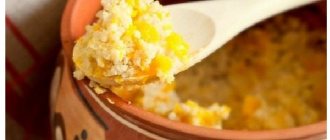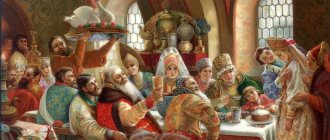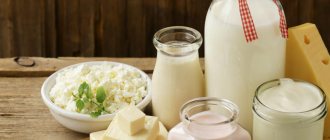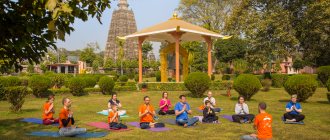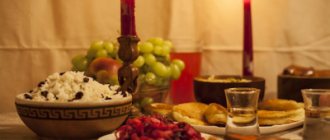The uniqueness of original Russian cuisine
Russia is a territory where a wide variety of nationalities live, each of them has added its own flavor to Russian cuisine, making it original and unique.
The Russian people are famous like no other in the world:
- an abundance of treats;
- variety of snacks;
- a variety of first courses;
- unique recipes for pickling vegetables, mushrooms and fruits;
- delicious baked goods;
- various fish products.
Russian Orthodox cuisine
Russian Orthodox cuisine has been formed over centuries, maintaining the traditions of its ancestors and strictly observing all the laws of the Church. Foreign tourists and people living abroad consider caviar, red and black, cabbage soup, Ural dumplings, pancakes and pies, which have no equal in the whole world, to be a symbol of Russian cuisine.
It was Russia that gave the world more than 60 cabbage soup recipes. The Russian summer menu is rich in cold soup recipes. They are prepared lean and with meat, using kvass, kefir and beet broth.
Thanks to the early invention of yeast, Russian women learned to create baking miracles that made Russian cuisine famous throughout the world. Lush rolls and crumpets, kulebyaki and pies with all kinds of fillings, pancakes, pancakes and pancakes evoke a huge appetite just by their names.
Traditional Russian pie - kulebyaka
Being an agricultural country for a long time, our ancestors came up with a wide range of dishes based on cereals and vegetables. Various porridges are served with dairy products, fish and meat. Unique recipes from rutabaga, turnips, radishes are so captivating with the taste of the prepared dishes that sometimes it is hard to believe that they are based on simple root vegetables.
Potatoes, tomatoes, and eggplants appeared on Russian menus only at the end of the eighteenth century. Nowhere else in the world are there an abundance of recipes for preparing pickled apples. Meat preparations differ from world recipes in the abundance of dishes made from offal. Jellied meat, beloved by all the peoples of Russia, is one of the unique inventions of the Slavic peoples.
Only in Russia can they serve exclusively prepared and decorated game, the list of which includes:
- hazel grouse;
- hares;
- wild ducks and geese;
- black grouse.
Wild duck caramelized in apples and oranges
The presence of forests has added variety to the menu of the Russian people. The berries are used as a filling for pies and pancakes, they are used to make jam and prepare fruit drinks.
Forest gifts, including nuts and mushrooms, which are salted, dried, pickled, and stored for the winter, are a good help, because Lent is ahead.
Russia is an Orthodox country, and according to the charter of the Church, people live in fasting for more than 200 days, this explains the close connection between Russian cuisine and Orthodoxy.
About fasting in Orthodoxy:
- Petrov post
- Christmas post
- Dormition post
Lenten recipes: homemade Lenten noodles.
2-3 hours before cooking, mushrooms should be soaked in cold water.
Make broth from pre-soaked mushrooms and roots. Remove the mushrooms and cut into thin strips. Boil the noodles until tender in a small part of the resulting broth, along with the mushrooms. Place everything on a sieve.
Bring the remaining, most of the broth to a boil and add noodles and mushrooms to it.
Before serving, add a spoonful of vegetable oil. Sprinkle with chopped herbs.
What adjustments did church laws make to the menu of Russian cuisine?
Russian Orthodox cuisine was formed under the influence of church requirements for each post, and there are several of them throughout the year. When fasting begins, Christians stop eating all products of animal origin, including meat, offal, dairy products, and fats.
The main dishes recommended by the Orthodox Church remain gifts of the forest and field, porridge, and on selected days fish and fish products in the form of caviar are allowed.
Number of church fasts per year
The year begins with Lent, the date of which varies depending on the day of Easter. In 2021, strict abstinence before the Holy Resurrection of Christ falls on March 11 - April 27. Orthodox food of this period is limited to minimalism. Dry eating lasts more than three weeks in total, when it is forbidden to serve thermally processed food. Vegetable oil is allowed only on weekends, and fish is allowed on Annunciation and Holy Saturday.
Dry eating during Lent
Summer Lent, which is always in number, June 4 - July 11, ends with the feast of Peter and Paul, hence its name Petrov. Compared to strict abstinence for 49 days, summer food restriction, when there are many berries, mushrooms and fresh vegetables around, seems like child's play. At this time, dry eating is introduced only on Wednesdays and Fridays, on Mondays the consumption of vegetable oil is limited, and on other days Christians can enjoy fish dishes.
Before the Feast of the Dormition of the Virgin Mary, Orthodox believers abstain from eating modest food in memory of Mary, the Mother of God.
During the Dormition Fast (August 14 - 27), the first, third, fifth days of the week remain a time of dry eating; vegetable oil is prohibited on Tuesday and Thursday. On weekends, all food is cooked in oil, but there is still a ban on fast food and fish. If the Great Feast of the Remembrance of the Holy Mother of God falls on days of strict abstinence, Wednesday or Friday, then the ban on eating fish is lifted.
The Church divided the rules for eating during the Nativity Fast into 3 parts.
- November 28 - December 19 food restriction is identical to Peter's abstinence.
- From December 20 until the New Year, dry eating is only on Wednesdays and Fridays, Mondays are without vegetable oil. Fish is allowed on weekends.
- From January 2 to January 6, you can use the menu of the first week of the Great Abstinence.
Weeks when there is no fasting on Wednesdays and Fridays
There are several weeks during the year when you can eat a variety of foods for 7 days. These weeks are called continuous weeks.
Dishes for Christmas Eve
During Christmastide (January 7 - 18), you can eat everything, but do not forget that gluttony is a sin from the position of the Church and is completely unhealthy.
For two weeks, in 2021 it is January 29 - February 11, before Lent you can enjoy eating fast food.
During Cheese Maslenitsa, in the last week before strict abstinence, you can eat everything except meat products.
You don’t have to fast on Wednesdays and Fridays of Bright Week after Easter and 7 whole days after Trinity, and in 2021 it’s May 28 - June 3.
A fast that lasts one day
Before Epiphany Eve, when Orthodox Christians prepare for consecration with holy water, they adhere to strict fasting, preparing hungry kutia for dinner.
Remembering the death of John the Baptist, on the day of remembrance of the day of the Beheading of his head, the consumption of fast food is limited; on this day it is not recommended to pick up a knife, much less cut something round.
On September 27, the entire Orthodox world spends fasting and prayer, remembering the suffering of Jesus Christ that he endured on the cross.
During one-day fasts, meat and fish products are prohibited, but cooking with vegetable oil is allowed.
Russian Orthodox cuisine is rich in a variety of dishes, which are prepared in accordance with the laws of the Church according to the ancient recipes of our ancestors.
About Orthodox cuisine:
- Lenten baking recipes
- Russian Orthodox cuisine
- Pancake recipes for Maslenitsa
LiveInternetLiveInternet
PRAYERS BEFORE AND AFTER EATING
FOOD BEFORE EATING
Our Father, who art in heaven!
Hallowed be Thy name, Thy kingdom come, Thy will be done, as it is in heaven and on earth. Give us this day our daily bread; and forgive us our debts, just as we forgive our debtors; and lead us not into temptation, but deliver us from evil. The eyes of all trust in You, Lord, and You give them food in good season, You open Your generous hand and fulfill every animal’s good will. AFTER EATING
We thank Thee, Christ our God, for Thou hast satisfied us with Thy earthly blessings;
Do not deprive us of Your Heavenly Kingdom, but as You came among Your disciples, Savior, give them peace, come to us and save us. SECRET PRAYER BEFORE EATING FOOD FOR IMMEDIATE NUTRITION (prayer for weight loss)
I also pray to You, Lord, deliver me from satiety, lust, and grant me in spiritual peace to reverently accept Your generous gifts, so that by eating them, I will receive strengthening of my mental and physical strength to serve You, Lord, in the short remainder of my life on Earth.
Traditional thanksgiving phrase: “An angel for your meal!”
In Old Russian writing, the degree of reflection of different aspects of life is far from the same, which depended on the social significance of the corresponding phenomena of material culture. Thus, there is little information about the dinner and festive feast of a townsman or peasant, but the royal and patriarchal table is described quite fully. Let us name the published monuments that are richest in lexical content: “The Table Book of Patriarch Philaret 1623-1624.” (Antiquity and novelty. St. Petersburg, 1906 1909. Book 11 - 13); "The Patriarch's Table in 1691" (Zabelin I.E. Materials for history, archeology and statistics of Moscow. M., 1884); “The account book of the patriarchal order for food served to Patriarch Adrian and persons of various ranks from September 1698 to August 1694..” (St. Petersburg, 1890). The all-Russian rite of the monastery meal was recorded. The main source is the monastery canteens. In the library of the Russian Academy of Sciences, a statute of the Kirill Monastery of the late 16th century was discovered (fond 247, No. 4), describing the everyday life of the brethren; more than 20 sheets of the manuscript are devoted to the “everyday life of the brethren.” What is interesting about the tableware? The everyday people described the daytime howls (howl is an old Russian word denoting meal time; see DINING OUTY or meal time
) and a yearly circle of meals for the rank and file, mainly on fasting days: on these days the order of monastic life was especially strict and uniformly obligatory.
But on the holiday, variety and contentment were allowed, meat and intoxicating drinks of the monastery’s own production (Russian monasteries were always famous for their alcoholic drinks). The monastic meal is a collective ritual. The monks ate twice a day: lunch and dinner, and on some days they ate only once (although this “once” could be quite long); for various reasons, it occasionally happened that meals were excluded altogether. The main thing was not the quantity of food, but the quality of the dishes: lean or fast, the role of the dish in rituals, and the time of meals. The alternation of fasts and meat-eaters was rhythmic: during the week they fasted on Wednesday and Friday; there were four long fasts and three one-day fasts in the year. The table of the Kirillov monks differed little from what they ate in the surrounding villages, but in the monastery the rules of meals were stricter: “... there is fasting - they don’t eat soon.” An almost daily “cook” and the main first course is shti (cabbage soup): “In shteh, white cabbage or borscht or sorrel with garlic or onions and eggs with shtem, two for each brother or broken korovai or lisni for 4 brothers or korovai with fish for two brothers , and if there is scrambled eggs, then there are no eggs”; “Borscht shti from the photo.” White cabbage soup was made from fresh cabbage, and borscht soup was made from beets (its ancient name was borscht). They cooked cabbage soup with rub - with seasoning, which was prepared from flour with water or vegetable oil. The list of main courses was rich, and fish clearly reigned on the table. “Lack of fish is worse than lack of bread,” they said in the Russian North. According to the number of dishes served on the table, there was a difference between medium-sized lunch (feed) and smaller lunch (feed). If the dinner was average, then three types of fish were served, but if “the food was less,” two types of fish were served. In the evening, one type of fish was served”: “...in the evening meal, fresh fried fish and bream.” In addition, fish was baked and salted fish was also consumed. Let's also call the fish dish tavranchyuk. “...in Tavranchyuk frying pans there are sturgeon heads or smelt.” The monastic lunch included a pea brew made from strained (grated) or beaten (crushed) peas: “...there is another brew with butter, strained peas and noodles”; and the other eats eroh with a bat or porridge.” They cooked different porridges: milk, cool, sinner. The donated wax was used to make juice porridge - melted juice. Eggs and cucumbers were in use. Among dairy products, limp cheese is known - it is aged cottage cheese. This name is mentioned already in the Life of Theodosius of Pechersk in the 12th century. Among baked goods, the first place belongs to the pie: they were baked on a hearth, spun in oil, flavored with various fillings: “... some pies are made with eggs and with pepper, and others with cheese”; “pies with peas or juice”; “Two pies, one with kale and pepper or akim and the other with peas.” Then came “pancakes with honey”, “roguli and brushwood”, “brotherly rolls and Volotsk trading rolls”, “broken loaves” (made from butter dough), “cows with fish”, “quarter kolaches or korovais with turnips or carrots” , “pancakes with butter and with onions and others with juice”, “Odnova wheat pancakes with baking and other sinful ones with porridge, in the evening the same with milk”, “imported wheat white and rye bakes”. Bread was consumed less frequently than pies. Cookies are commonly called lisny. During fasting, they ate less, and the food was unpretentious: instead of baked bread, they prepared steamed bread - steamed flour from malt or buckwheat grain. There was kvass on the table all the time, except during Lent. On fasting days it was replaced by cabbage pickle or red rosol, i.e. from pickled beets. In addition, they drank unleavened (fresh) milk, boiled (baked) milk and Varenets (fermented baked milk). Let us also mention molasses, sytu (water saturated with honey), jelly, known from the times of Kievan Rus: “... jelly with cream, and tomorrow for lunch the same jelly with sytoyu.” The names of the dishes of the monastery meal have lived for centuries: porridge, eggs, pie, kvass, cheese, kutia have been known since the 12th century; from the 13th century - milk, beer. About the Russian meal, see the section Traditional Russian cuisine
and the page
ABOUT ORTHODOX HOLIDAYS
,
TRADITIONS OF THE RUSSIAN Feast
.
The Spaso-Yakovlevsky Monastery had an extensive subsidiary farm, thanks to which the monastic meal was provided with vegetables, fruits and dairy products. In the monastery garden in the 18th - 19th centuries. they grew: vegetables - cucumbers, carrots, beets, rutabaga, horseradish, cauliflower and cabbage, black and steamed radishes, onions and potatoes (the latter began to be cultivated in the mid-19th century); legumes - peas and beans; greens - lettuce, parsley, parsnips and spinach. As you can see, the assortment of vegetables and herbs was quite extensive, and the significant scale of garden farming is eloquently evidenced by the fact that in the middle of the 19th century. in the monastery there were two vegetable gardens, in which, in total, there were about two hundred ridges. At the turn of the 18th-19th centuries, after a radical redevelopment of the territory, a large garden was laid out in the monastery. Only in the first decade of the 19th century. more than 500 apple trees, 200 cherries, almost 300 plums and many black currant bushes were planted in it. It is not surprising that the monastery had no shortage of apples and berries. The monastery had a barnyard where cattle were kept. From here milk, sour cream and butter were supplied to the monastery table, and meat products were supplied to the guests and workers of the monastery for meals. Meanwhile, the bulk of food had to be purchased. Judging by the receipt and expenditure books, the most purchased items were flour, cereals and fish. The monastery purchased rye and wheat flour for baking bread. Pies were baked and pancakes were made from wheat flour, and jelly was made from pea flour and oatmeal. Porridges and stews were made from cereals, and they were also used to make fillings for pies. The most common cereal varieties were millet and oatmeal, buckwheat and rice, pearl barley and semolina. Eating meat in the monastery was prohibited by statute, but a variety of fish dishes were prepared in large quantities. The fish for the monastery meal were caught in the lake by the monastery servants, but they were mainly purchased from fishmongers. The following varieties are named in the documents: sterlet, sturgeon, beluga, burbot, pike perch, stellate sturgeon, navaga, catfish, tench, bream, pike, ide, crucian carp, perch, ruff and roach. The most expensive varieties of fish went for 40-30 kopecks per pound (400 grams), the cheapest - for 2-3 kopecks. The monastery bought fish in large quantities, for example, in 1852, about 170 pounds of fresh fish were purchased, in 1875 - more than 100 pounds (1 pood - 16.4 kg). Beluga, stellate sturgeon, pike perch and sturgeon were also purchased salted and lightly salted. Along with fresh and salted fish, the monastery purchased red and pressed caviar. Especially a lot of pressed caviar was bought in the middle of the 19th century, so in 1852 more than 10 pounds of it were purchased. As for vegetables, at the end of summer and beginning of autumn, huge quantities of cucumbers and cabbage were purchased for pickling for the winter. It is known that the monastery cuisine was distinguished by a variety of mushroom dishes; it is no coincidence that both fresh and dried mushrooms were so often purchased. We regularly bought a variety of spices, namely: mustard, pepper, horseradish, vinegar. We also purchased seasonings: cinnamon, vanilla, cloves, bay leaf; dried fruits - raisins and prunes. Special mention should be made about drinks. The most common and favorite monastic drink was kvass, for the preparation of which malt was used. Every year the monastery purchased dozens of pounds of malt. Honey was bought in large quantities, on the basis of which sbiten and mead were prepared. Traditional Russian drinks in the second half of the 19th century were gradually replaced by tea, which over time firmly entered into monastic use. An idea of a monastic ceremonial dinner in the mid-19th century. allows us to compile a list of dishes that were served on November 27, 1850, the day of celebration of the memory of the founder of the monastery. “The register of food on the holiday is holy.
Jacob 1850 November 27th day For the appetizer on top
1. 3 kulebyaki with minced meat 2. 2 steamed pike on two dishes 3. Jellied perch with minced meat on two dishes 4. Boiled crucian carp on two dishes 5. Fried bream on two dishes
B Brattskaya meal for lunch
1. Kulebyaka with porridge 2. Pressed caviar 3. Lightly salted beluga 4. Botvinya with lightly salted fish 5. Shchi with fried fish 6. Fish soup from crucian carp and burbot 7. Pea sauce with fried fish 8. Fried cabbage 9. Dry bread with jam 10. Kanpot from apples
For the white clergy appetizer
1. Caviar and white bread on 17 dishes 2. Cold goloviz with horseradish and cucumbers on 17 dishes” Since, starting from the middle of the 18th century, the Yakovlev monastery was by no means in poverty, the monastery meal was distinguished by both the quality of products and the variety of dishes;
the monastery itself was famous for its hospitality and hospitality - the food here was very tasty. Means of maintenance of the Spaso-Yakovlevsky Monastery
Sources of means of maintenance, which at the turn of the 18th - 19th centuries.
The Yakovlevsky Monastery was located according to the method of receiving money, which can be divided into three categories: regular payments, non-salary income and donations. 1. State payments
- money paid from the state treasury.
After the reform of 1764, in accordance with the second class assigned to the monastery and taking into account the surplus amount established in 1797, the Yakovlevsky Monastery received 2393 rubles annually. 11 kopecks This money was issued from the Rostov district treasury at the beginning of each year. In the monastery, their payment was made twice a year. Staff money was distributed according to the following items: • for the salary of the rector and brethren - 745 rubles; • for a monastery meal - 340 rubles; • for the salary of servants - 354 rubles. 60 kopecks; • for economic monastic needs (“for stable expenses and firewood”) - 300 rubles; • “for church needs,” which meant the purchase of six buckets of red “Cahors” wine for preparing communion and eight and a half pounds of wheat flour for baking prosphora for the whole year - 53 rubles. 50 kopecks; • for repairs or “repairs” of monastery buildings, primarily churches, as well as for the maintenance of the sacristy - 600 rubles. In 1834, the Spaso-Yakovlevsky Monastery was elevated to the level of first-class monasteries, and therefore regular payments from the treasury amounted to 4,200 rubles. 82 kop. in year. 2. Non-salary income
is money earned by the monastery itself.
This included funds received from the rental of land plots, hay fields, fisheries and the monastery mill, as well as money received from the sale of monastic livestock, hay, vegetables and fruits. 3. Donations.
It is difficult to accurately record all donations to the monastery, but it is obvious that there were a lot of them.
The size of donations could be very different - poor pilgrims donated pennies, wealthy pilgrims did not spare tens of thousands of rubles. As a rule, the largest monetary deposits were targeted. A good example of this is a donation of 65 thousand rubles. Count Nikolai Petrovich Sheremetev for the construction of the Dimitrievsky Church. The brethren of the Spaso-Yakovlevsky Monastery
The main duty of the monastic brethren was to conduct services in the monastery churches. In the 19th century, two early and one late liturgies were served in the monastery daily. A certain order of holding church services was established between hieromonks, hierodeacons and church clerks - the so-called “turn”, performed during the week. In their free time from regular services, members of the brethren performed “choir obedience” - during church services they sang behind the choir. The admission of new members to the brethren of the Yakovlevsky Monastery was carried out only if there were vacancies in the monastery, which appeared after the death, transfer to another monastery or retirement of one of the monastics. Tonsure became possible after a test or “temptation” lasting two to three years, during which the novice lived in a monastery “to accustom himself to monastic life.” The tonsure was performed on the condition that he “conducted a decent life and carefully corrected the assigned obediences.” The reception of novices and their tonsure were carried out with the consent of the Moscow Synodal Office. The reception, transfer and dismissal of monks were also carried out only with the permission of the Moscow office of the Synod. There were more than enough people wishing to join the Yakovlev brethren. A significant portion of the petitions for admission to the monastery preserved in the archive are subject to the resolution “to refuse for lack of space.” In the Spaso-Yakovlevsky Monastery there was a communal charter, according to which all the brethren were obliged to be present at the daytime and evening common meals. Only the sick were allowed to eat in their cells. The rules of the Yakovlevsky hostel were quite strict. Leave to the city was allowed only with the permission of the monastery authorities and only in cases of real need, limited to the period of time between the daytime meal and the evening service, that is, from noon to four o'clock in the afternoon.
How do lay people fundamentally differ from monks in nutrition? The former simply love to eat deliciously, the latter do the same, but with a deep, godly meaning and with lofty spiritual intentions. Of course, this great spiritual wisdom is little accessible to the understanding of ordinary lay people. Accusing the atheistic Russian intelligentsia of his time, priest Pavel Florensky said this about their attitude towards food: “The intellectual does not know how to eat, much less eat, he does not even know what it means to “eat”, what sacred food means: they do not “eat” the gift God, they don’t even eat food, but “gobble up” chemicals.” Many people probably do not clearly understand the importance of food in the life of a Christian. To find out what the clergy will eat for lunch after prayer, on one of the usual working days we go to the patriarchal kitchen of the St. Daniel Stavropegic Monastery. “Welcome,” the cellarer
(the head of the monastery table, food supplies and wine cellar) monk Igor and leads to the monastery kitchen.
For a place where food is prepared for several hundred people, the premises are quite small. The main area is occupied by cast iron stoves, a roasting pan and an oven for baking a variety of pies and the famous monastery honey cakes. The first fragrance you notice in the kitchen is the wonderful, sweet smell of fresh baked goods. We found the source of this wonderful aroma cooling on huge baking sheets behind the stove. — What else, besides bread, is on your lunch menu today? - we are curious. Father Hermogenes. For many years the meal was his monastic obedience. The resident of the St. Daniel Monastery, Hieromonk Hermogenes (Ananyev), served for many years as the monastery’s cellarer, that is, he was responsible for the kitchen and meals. Constant prayers, monastic abstinence and strict observance of fasts bestowed on his appearance a special, truly inexplicable, God-inspired Orthodox holiness.
Father Hermogenes published a popular book about proper Orthodox nutrition, “Father Hermogenes’ Kitchen,” in which he teaches how to properly prepare Orthodox dishes that give true Christian good morals and a slim body.
See some of his great recipes below. In the photo: a still from Father Hermogenes’ video. The monastery's chef kindly demonstrates the dishes that God sent the brothers today for their modest monastic lunch: Cold appetizers:
- curly sliced vegetables, - painted stuffed pike perch, - tender salmon, specially salted in his own way
Hot appetizer:
- julienne of fresh forest mushrooms baked in sauce "bechamel"
Salad:
- vegetable with shrimp "Sea Freshness"
First course:
- fish solyanka "monastery style"
Second course:
- salmon steak with tartar sauce
Dessert:
- ice cream with fruit.
Drinks:
- signature monastery fruit drink - kvass And, of course, served for lunch: - freshly baked
Tags:
triumph of Orthodoxy RECIPES OF DISHES OF RUSSIAN MONASTERIES
Cited 3 times
Like share
0
Like
- I liked the post
- Quoted
- 0
Saved
- Add to quote book
- 0
Save to links
Liked
0
Monastic food: recipes during Lent
But this does not mean that lean food should be tasteless. Having visited the monastery the other day, I was convinced that even during fasting you can eat nutritiously and very tasty. In this issue we have collected recipes from the cook of the monastery kitchen, as well as priceless home secrets of our readers.
Monastery-style potatoes
Ingredients: potatoes – 0.5 kg, onion – 1 small onion, flour – 0.5 tbsp. l., salt – 2-3 pinches, vegetable oil – 5-6 tbsp. l., dry spicy spices - 1-2 pinches.
PREPARATION: Boil potatoes in their skins, cool and peel. Cut into circles or slices. Finely chop the onion and lightly fry in vegetable oil. Add potatoes, keep on fire with onions for about 5 minutes. Sprinkle with flour, spices and salt and fry until golden brown and crispy. Don't forget to stir the potatoes during the frying process.
The dish can be served as a side dish, or you can eat it without anything.
Oyster mushrooms with garlic marinade
Ingredients: fresh oyster mushrooms – 500 g, vinegar 5% – 50 ml, garlic – 2 cloves, parsley – 1 bunch, vegetable oil, pepper and salt to taste.
PREPARATION: Cut off the hard part of the mushroom stems. Finely chop the parsley and garlic. Heat a frying pan with oil and fry the mushrooms in portions on both sides until golden brown. Lay out the fried mushrooms in layers, immediately sprinkle with salt and pepper, sprinkle with vinegar and sprinkle with chopped parsley and garlic. Serve hot oyster mushrooms with garlic marinade.
Beans with onions and herbs
Ingredients: beans – 0.5 kg, parsley root – 1 pc., onions – 2 pcs., garlic – 3-4 cloves, bay leaf – 2 pcs., sunflower oil, seasoning for bean dishes – 1 tsp. ., sweet pepper - 1 tsp, salt and pepper to taste.
Preparation: Soak white beans overnight in cold water. Boil until tender in salted water, but do not let it boil. Dice the onion. Peel the parsley root and cut into small cubes. Fry with onions in sunflower oil. Add the cooked beans to the vegetables and pour in a little of the broth in which the beans were cooked. Now add seasonings, salt, bay leaf and simmer for 10-15 minutes. At the end, season the beans with crushed garlic.
Lenten borscht with prunes
Ingredients: beans – 100 g, water – 1.5 l, white cabbage – 200 g, potatoes – 2 sh?, t., onions – 1 pc., garlic – 1 tooth, carrots – 1 pc., tomato pasta – 2 tbsp. l., beets - 1 pc., sugar (piece by piece) - 1 tbsp. l., apple cider vinegar or lemon juice - 2 tbsp. l., allspice – 4 pcs., black pepper (peas) – 6 pcs., parsley (dry) – 1 tsp., dill (dry) – 1 tsp., bay leaf – 1 pc., prunes – 11 pcs., greens (for serving, green onions and parsley) – 0.5 bunches, sunflower oil for stewing vegetables – 2 tbsp. l, salt (to taste) – 2 tsp.
Preparation: Beans need to be soaked for at least 4 hours. We put it to cook in a saucepan, pouring 1.5 liters of water. At the same time, while it is cooking, prepare the borscht dressing. To do this, pour oil into a saucepan and place a crushed clove of garlic in it. After a minute, when it has given its aroma to the oil, add finely chopped onion and keep it on the fire until golden brown. Then add the carrots, grated on a medium grater, and a little later – the similarly prepared beets. Stir and add sugar. Stir and simmer with the lid closed over low heat until the vegetables are ready for 12-15 minutes. Next, put the tomato paste in a saucepan and pour vinegar or, if children will eat the borscht, lemon juice. Mix everything and simmer for another minute. The borscht dressing is ready.
Once the beans are soft, about 40 minutes, add the potatoes to the pan. A little later - cabbage and prunes, cut in half. After about three minutes, you can put the dressing in the pan, add salt to taste and cook the borscht for another 5 minutes. Try it. If necessary, you can adjust the taste of borscht by adding sugar or vinegar. Add spices. Let sit for a while and pour into plates, garnishing with herbs. You can make croutons in the oven: cut the bread into cubes, squeeze out a clove of garlic, sprinkle with dry dill and salt and sprinkle with sunflower oil. Place in the oven for 5-7 minutes at 180 C.
Kharcho lean
Ingredients: potatoes – 2 pcs., rice – 0.5 tbsp., onion – 2 pcs., garlic – 3-4 teeth, tomato puree – 0.5 tbsp., vegetable oil – 2-3 tbsp. l., carrots - 1 pc., basil to taste, chopped walnuts - 3-4 tbsp. l., salt, pepper - to taste.
Preparation: Boil potatoes in their skins until tender. Peel and cut into cubes. Peel the garlic and cut into thin slices. Chop the basil. Heat vegetable oil in a saucepan (in which you will cook the soup). Place tomato puree in it and heat until bubbly, add chopped onion and garlic and fry, stirring, until soft. Add carrots cut into half circles to the pan. Then add chopped nuts, salt, pepper, and other spices of your choice. Fry, stirring, for 4-5 minutes. Pour 2 liters of boiling water into the pan, add rice.
Cook the soup for 20 minutes until the rice is cooked. Then add the prepared chopped potatoes. Remove from heat, season with herbs, cover and let steep for 20 minutes.
Crab salad
Ingredients: crab meat or crab sticks – 450 g, wine or apple cider vinegar – 2 tbsp. l., juice of half a lemon, celery - 2-3 stalks, bell pepper - 1 pc., blue onion - 1 pc., cucumber - 1 pc., parsley, salt, pepper - to taste, lean mayonnaise - 3 tbsp. l.
Preparation: Chop crab sticks or crab meat, add vinegar and freshly squeezed lemon juice and stir. Cut the celery into thin pieces, bell pepper into small cubes. Cut the blue onion into thin half rings or quarter rings. Cucumber – into strips. Chop the parsley. Mix all the chopped vegetables with the crabmeat or chopped crab sticks in a large bowl. Salt and pepper the salad, season with mayonnaise. Add herbs and stir. You can serve the lean crab salad on lettuce leaves, garnished with slices of ripe avocado and lemon.
Cabbage cutlets
Ingredients: cabbage – 500 g, carrots – 500 g, vegetable oil – 4 tbsp. l., semolina - 100 g, breadcrumbs - 100 g, water - 100 ml, sugar - 1 tsp, salt - to taste.
Preparation: finely chop the peeled, washed cabbage, cut the peeled carrots into thin strips. Place the chopped vegetables in a saucepan, cover with cold water and bring to a boil, then add a spoonful of vegetable oil. Simmer over medium heat until the cabbage is soft. Gradually pour semolina into the pan - stir constantly to avoid lumps. Boil the ingredients for 10 minutes, then remove the pan from the heat and let the mixture cool. Form cutlets of the same shape, roll them in breadcrumbs and fry in vegetable oil on both sides.
Lenten gingerbread
Ingredients: sugar – 1 tbsp., flour – 7 tbsp., honey – 2 tbsp., soda – 1 pinch, vinegar or lemon juice – 1 tsp., boiled cooled water – 3/4 tbsp.
Preparation: pour sugar into a saucepan, add water and honey, stir. Stirring, bring the mixture to a boil. Remove from heat (sugar should dissolve) and cool slightly. Gradually add flour to the cooled mixture, quench the soda with lemon juice, add to the dough, knead it and leave for half an hour to cool. Roll out the dough to a thickness of 1.5 cm. Cut out the lean gingerbread cookies with a mold. Cover a baking sheet with parchment and place gingerbread cookies on it. Bake lean gingerbread cookies in an oven preheated to 220 degrees for 15-20 minutes. Cool the finished gingerbread cookies and decorate them with glaze.
Lenten recipes: mushroom hodgepodge in a frying pan
Mushroom solyanka is a lean dish, but tasty and satisfying. To prepare it, we will need salted mushrooms - it is better if they are white or yellow milk mushrooms. Bitters, volushki, saffron milk caps, and salted boletus mushrooms are also suitable.
This is not a soup or a stew - the finished dish will be juicy, but without excess liquid.
Salted mushrooms - 2 cups
Fresh or pickled cabbage - 500 g
Two bulbs
Four tablespoons of vegetable oil
Cut the mushrooms into strips and fry with onions in a frying pan. Add a spoonful of flour and fry a little more, stirring with a spatula.
Simmer the cabbage until soft, squeeze.
Place the solyanka in a frying pan without a handle: a layer of cabbage, a layer of mushrooms and cabbage on top. Add some brine or water to the pan.
Bake in the oven at 180 C until the top layer is browned.
Lenten recipes: Oatmeal jelly
Kissels have been known in Russia for a long time. Traditional Russian jelly has little in common with the sweet, starchy drink. Most often it is made from brewed flour or cereal.
There are two main ways to prepare such jelly - with short-term fermentation and without fermentation.
Try this, the simplest method.
Oatmeal - two glasses
Water - three glasses
Three tablespoons of granulated sugar
Juice and zest of half a lemon
Pour cold water over the flakes and leave for several hours.
Strain the resulting infusion and squeeze through a sieve into a saucepan. Add sugar, lemon juice and zest to the oatmeal infusion.
The jelly is cooked on the stove, stirring constantly until thickened.
The finished hot jelly is poured into a pre-cooled form and placed in the cold until completely thickened. Serve the jelly out of the mold onto a dish, topped with poppy seed or almond milk, honey or jam.
Ingredients:
- Fish fillet – 500 grams
- Potatoes – 500 grams
- Hard cheese – 150 grams
- Sour cream - 1 glass
- Canned or fresh mushrooms - 200 grams (fresh ones will need one and a half times more)
- Butter - 1-2 tbsp. spoons
- Onions - 1-2 pieces
- Salt - To taste
- Ground black pepper - To taste
- Ground coriander - to taste
- Dried dill - To taste
- Vegetable oil - 1-2 tbsp. spoons
- Eggs - 3-4 pieces (optional)
Number of servings: 3-4
Description of preparation:
Oddly enough, it was in monasteries that the culinary traditions of many European cuisines developed over many centuries - and Russian in this case is no exception.
Monasteries always had their own hunting grounds, pastures, creameries and cheese factories, lakes and fish ponds. They often received important guests - among the pilgrims were merchants and princes, who had to be well received and tasty treated. Therefore, it is not surprising that so many original recipes were created in the monastery kitchens, many of which have survived to this day. I would like to say with confidence that the recipe for cooking fish in a monastic way is one of them, but I cannot say this. But despite its “vague” origin, the dish turns out delicious - however, boiled eggs seem somewhat unnecessary, but here, as they say, “taste and color”... You don’t have to use them - a combination of fish with mushrooms, cheese and potatoes and without them will delight any gourmet. Purpose: For lunch / For dinner Main ingredient: Fish and seafood / Mayonnaise Dish: Sauces / Hot dishes Geography of cuisine: Russian cuisine

